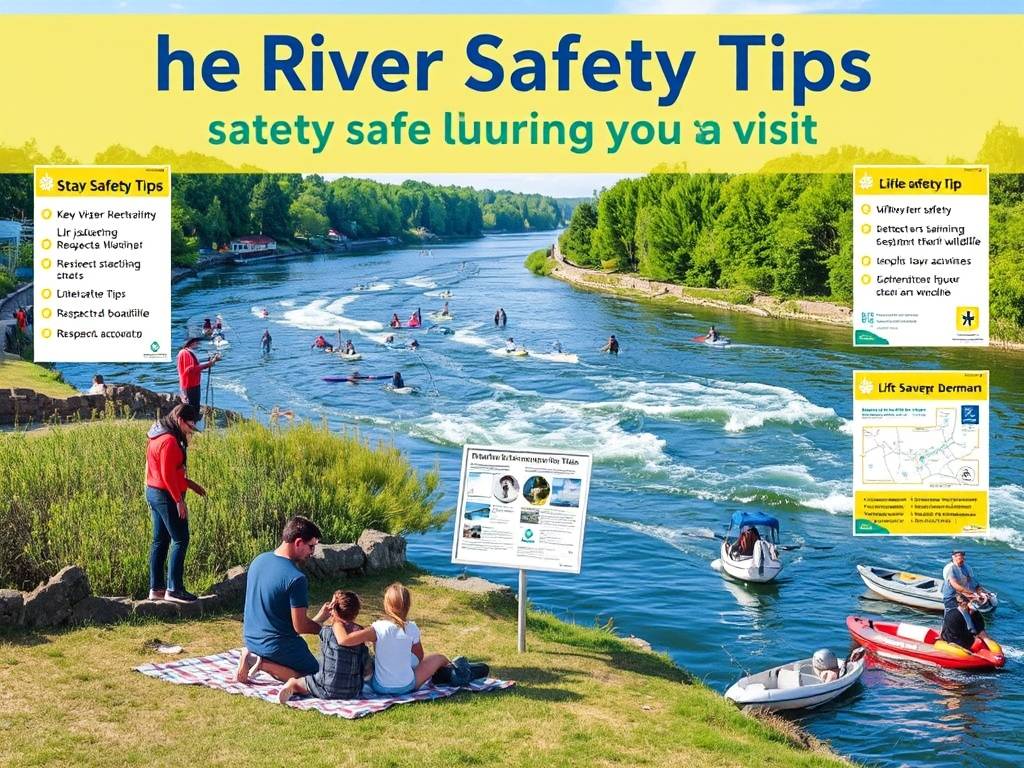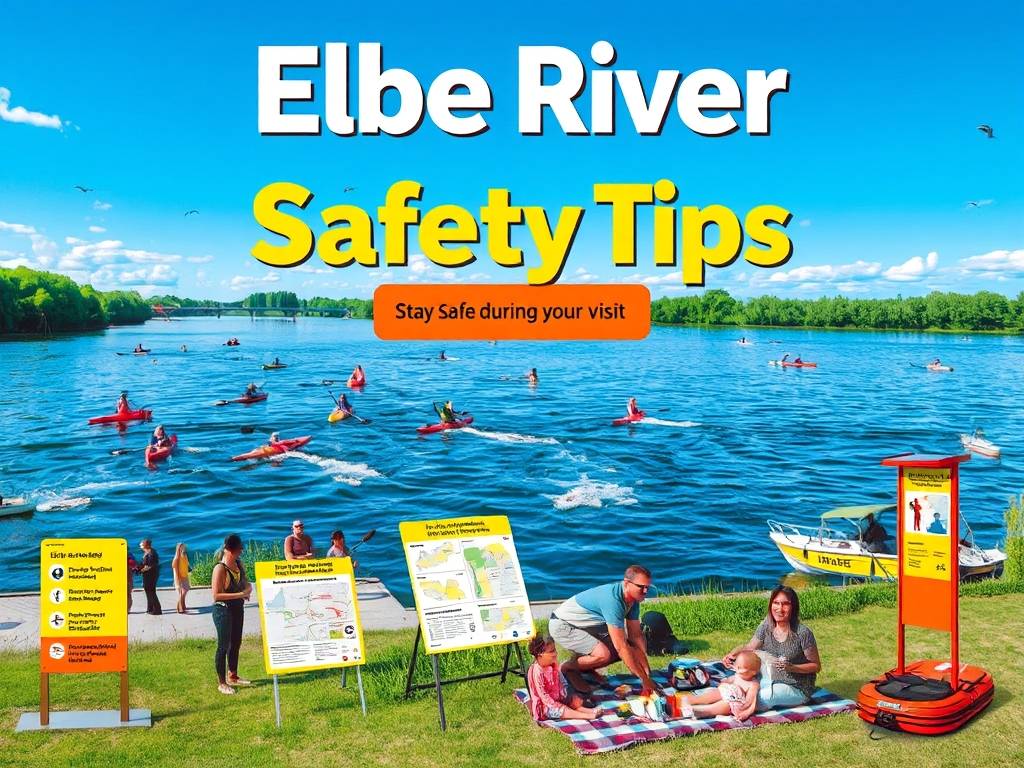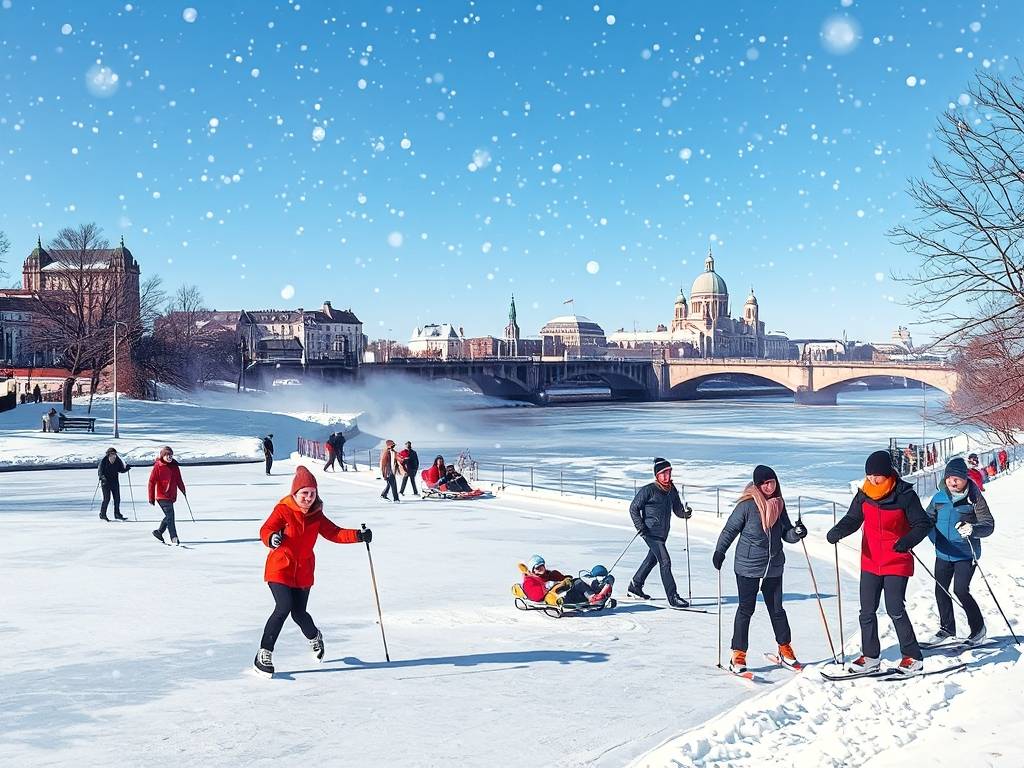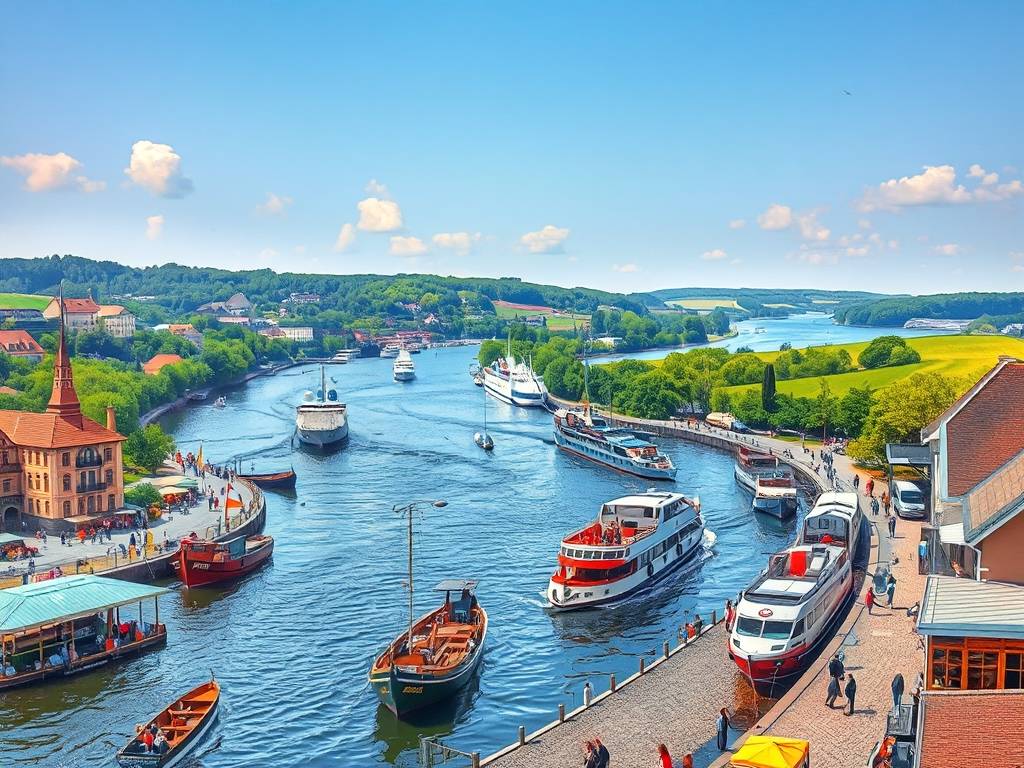Global Travel Information
Elbe River Safety Tips: Stay Safe During Your Visit
The Elbe River Explorer's Guide: Essential Safety Tips for a Perfect and Secure Journey
Flowing through the heart of Europe, the Elbe River is a majestic waterway that carves a path of stunning beauty from the Czech Republic’s Bohemian highlands to Germany’s North Sea coast. Whether you're dreaming of a serene cruise past Dresden's iconic skyline, a cycling adventure along its scenic banks, or a leisurely stroll across its historic bridges, a visit to the Elbe promises unforgettable memories. However, like any powerful natural force, the river demands respect. Your safety on and around the Elbe is the single most important ingredient for a truly enjoyable experience. This comprehensive guide is designed to be your trusted companion, packed with essential Elbe River safety tips to ensure your visit is not only spectacular but also secure from start to finish.
Understanding the River's Character: Water Levels and Currents

The first step to staying safe is understanding that the Elbe is a living, breathing entity that changes with the seasons and the weather. Its water levels can fluctuate dramatically.
- High Water (Hochwasser): After heavy rainfall or rapid snowmelt, the Elbe can swell significantly. During these times, river currents become much stronger and more unpredictable. Paths along the riverbank may become submerged or slippery, and ferry services or boat tours might be suspended for passenger safety. Always check the local water level reports before you head out. A simple online search for "Elbe River water levels" will provide you with real-time data.
- Low Water (Niedrigwasser): Conversely, during dry spells, the river can experience low water levels. While this might seem less dangerous, it presents its own set of challenges for navigation, particularly for larger vessels. For swimmers and waders, low water can sometimes expose hidden debris.
The key takeaway is to never underestimate the power of the river's current. Even on a calm, sunny day, the flow can be stronger than it appears. This is a fundamental aspect of staying safe near the Elbe River.
On the Water: Boating, Cruising, and Swimming
For Cruise Passengers and Boat Tourists: When you're enjoying the breathtaking views from a commercial cruise ship or a guided tour boat, you are in generally safe hands. However, personal responsibility is still crucial.
- Pay Attention to Safety Briefings: It might be tempting to tune out, but always listen to the crew's safety instructions. Know where the life jackets are stored and understand the emergency procedures.
- Be Mindful on Deck: Deck surfaces can be wet and slippery. Wear appropriate footwear with good grip. Be especially cautious when moving around, and use handrails at all times.
- Supervise Children Closely: Never let children run unattended on a boat. The railings are there for protection, but they are not a substitute for vigilant supervision.
For Private Boaters, Kayakers, and Paddleboarders: If you're venturing onto the water in a smaller craft, your Elbe River water safety preparedness needs to be more thorough.
- Wear a Life Jacket: This is non-negotiable. Every person on board must have a properly fitted life jacket or personal flotation device (PFD). The unexpected can happen in an instant—a sudden wake from a larger vessel, a hidden log, or a change in weather can throw you overboard.
- Check Weather and River Conditions: Do not embark without a recent weather forecast and a clear understanding of the river conditions for that day.
- Know the Rules of the Waterway: The Elbe is a busy shipping channel. Large cargo ships have the right of way and take a very long time to maneuver or stop. Stay clear of them and never attempt to cross directly in front of one.
- File a Float Plan: Let someone on shore know your planned route and your expected return time.
Is it Safe to Swim in the Elbe River? This is a common question, and the answer requires caution. While there are designated bathing areas, swimming in the main river channel is generally not recommended due to strong currents, cold water temperatures that can lead to hypothermia, and potential water traffic. If you do choose to swim, only do so in officially marked and supervised bathing spots, never alone, and never under the influence of alcohol.
Riverside Adventures: Cycling and Walking
The Elbe Cycle Path (Elberadweg) is one of the most popular long-distance bike trails in Europe, offering a relatively flat and picturesque journey. To ensure your safe Elbe River travel on land:
- Stay on Designated Paths: The riverbanks can be unstable, especially after rain. Erosion can create unseen drop-offs. Stick to the marked trails for your own safety.
- Beware of Bridges and Locks: Exercise extreme caution when crossing bridges, many of which have narrow pedestrian and cycling lanes. Be aware of traffic and always yield when necessary. Locks and weirs are fascinating to watch but are areas of intense water activity and should be observed from a safe, designated distance.
- Be Visible: If you are cycling or walking during dawn, dusk, or in poor weather conditions, wear reflective or bright clothing.
- Protect Your Belongings: As with any tourist destination, be aware of your surroundings and keep your valuables secure. This is a simple but effective tip for preventing accidents on the Elbe River that involve theft or loss.
Weather and Seasonal Considerations
The weather in Central Europe can be changeable. Your essential safety precautions for visiting the Elbe River must include weather preparedness.
- Sun Protection: On sunny days, the reflection off the water can intensify sun exposure. Wear sunscreen, a hat, and sunglasses.
- Sudden Storms: Summer can bring sudden thunderstorms. If you see lightning or hear thunder, seek immediate shelter indoors. Avoid open areas, isolated trees, and being on the water.
- Seasonal Clothing: Dress in layers. A beautiful morning can turn into a chilly, windy afternoon. Having a waterproof jacket is always a wise decision.
Health, Navigation, and Emergency Preparedness
A little planning goes a long way in preventing problems.
- Hydration and Nutrition: Carry a sufficient supply of water, especially when cycling or hiking. While there are charming cafes and restaurants along the way, the distances between them can be long.
- Have a Map and a Power Bank: Don't rely solely on your phone's GPS. Cell service can be spotty in some rural sections of the river valley. A physical map or a downloaded offline map can be a lifesaver. Carry a portable power bank to keep your phone charged for communication and navigation.
- Know the Emergency Number: The universal emergency number throughout the European Union, including Germany and the Czech Republic, is 112. Save it in your phone and call it for any medical, fire, or police emergency.
By internalizing these Elbe River safety guidelines, you are not just following rules—you are empowering yourself to engage with this magnificent river confidently and respectfully. A safe trip is a happy trip, allowing you to fully immerse yourself in the cultural treasures, breathtaking landscapes, and serene moments that make a journey along the Elbe so special. So pack your bags, your sense of adventure, and this guide to ensuring a safe and enjoyable Elbe River visit. The river is waiting to share its stories with you.

相关文章
- Elbe River Castles & Palaces: Historical Sites Along the Banks
- Elbe River Transportation: How to Get Around Easily
- Elbe River Winter Travel Guide: What to Do in Cold Months
- Elbe River Summer Activities: Kayaking, Picnics & More
- Elbe River Autumn Scenery: Fall Foliage Viewing Spots
- Elbe River Spring Events: Blossoms & Festivals
- Elbe River Cruise Prices 2025: Booking Tips & Deals
- Elbe River Day Trips: Short Excursions from Berlin
- Elbe River Photography Spots: Capture Stunning Views
- Elbe River Literary Connections: Authors Inspired by the River
发表评论
评论列表
- 这篇文章还没有收到评论,赶紧来抢沙发吧~


